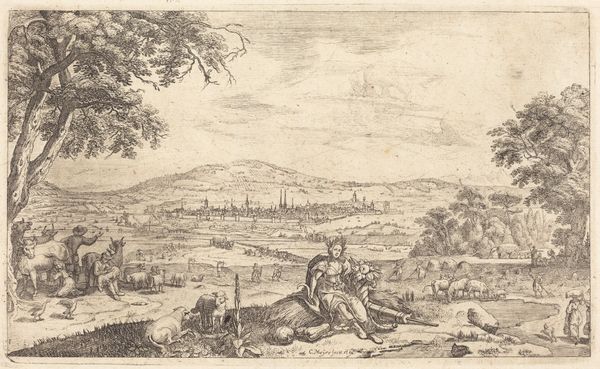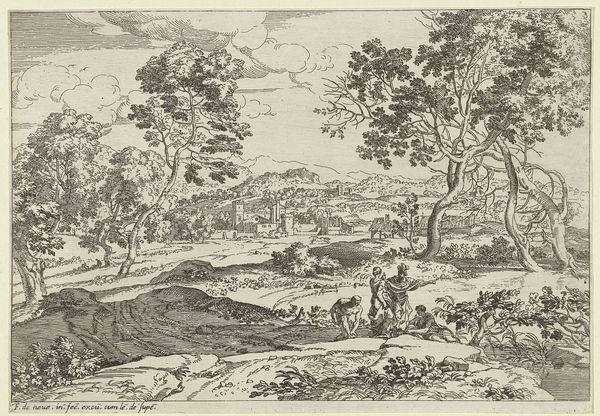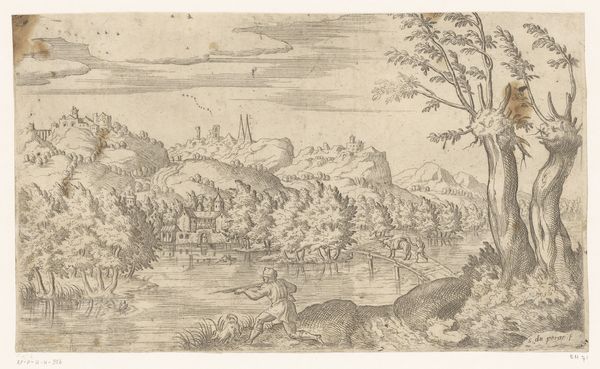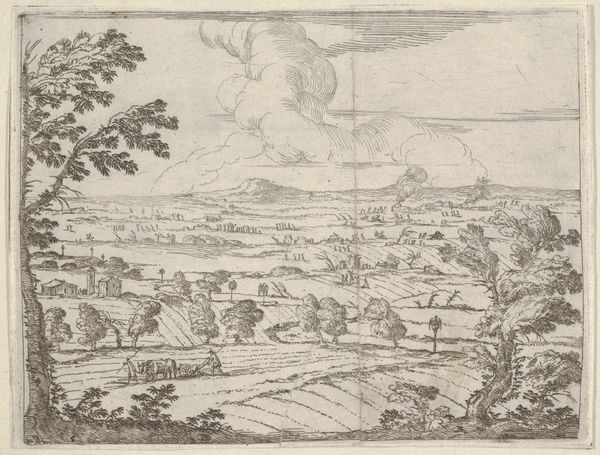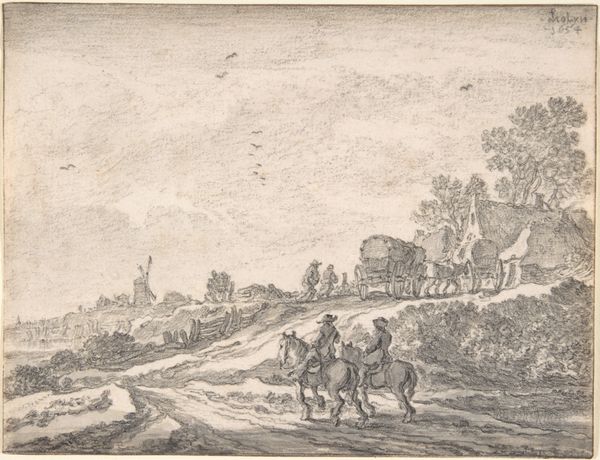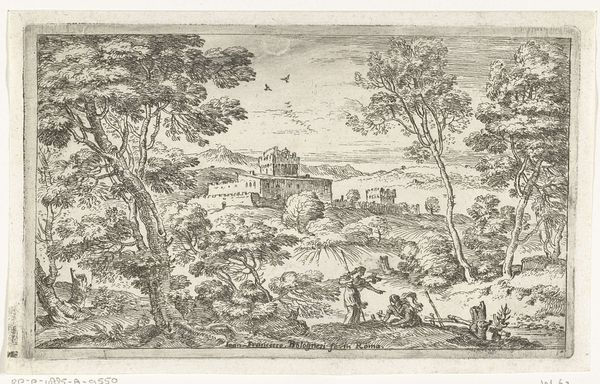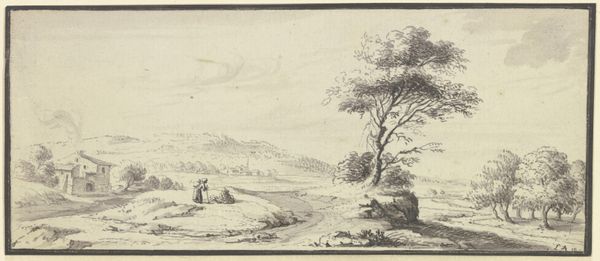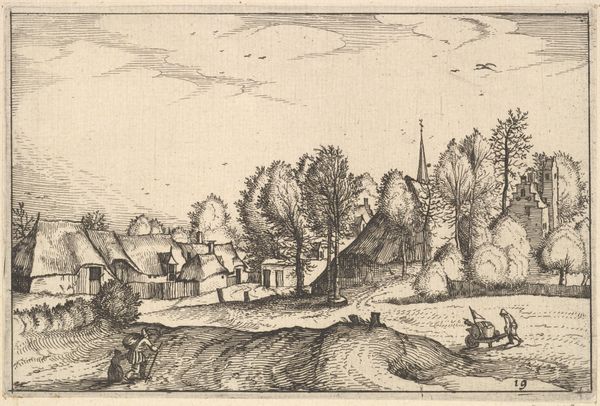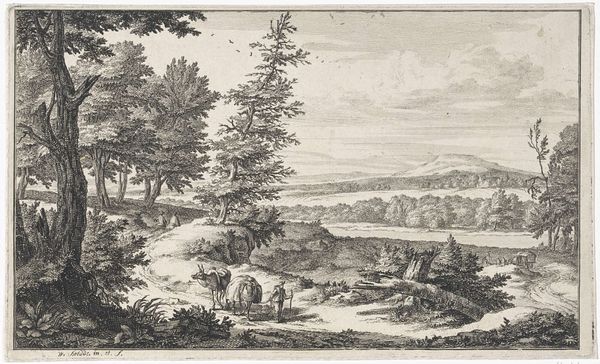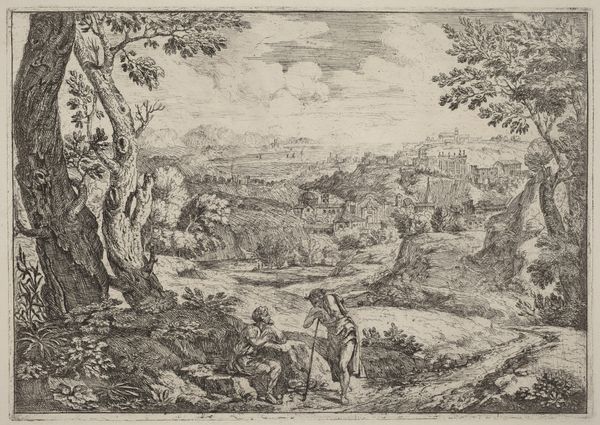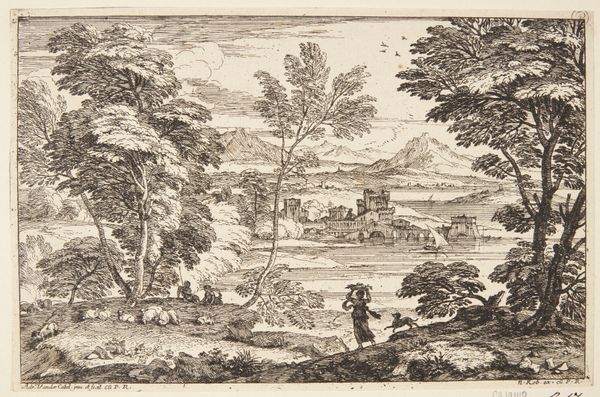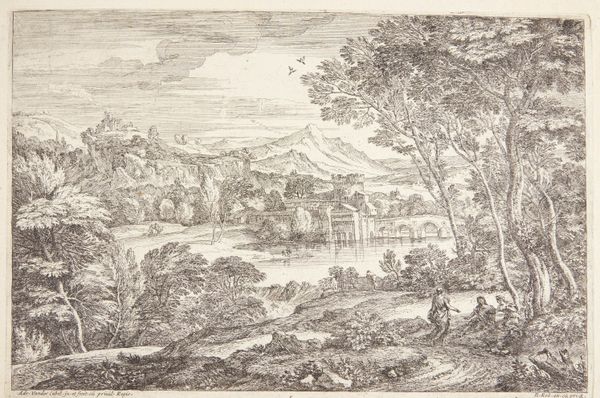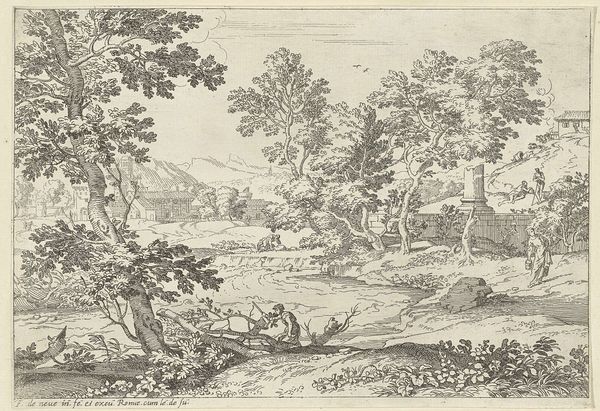
print, etching
#
baroque
# print
#
etching
#
landscape
#
cityscape
Dimensions: plate: 14.1 x 23.8 cm (5 9/16 x 9 3/8 in.) sheet: 18 x 27.8 cm (7 1/16 x 10 15/16 in.)
Copyright: National Gallery of Art: CC0 1.0
"Spring" was created by Conrad Meyer in the 17th century, using etching on paper. With this intaglio printmaking technique, Meyer would have used a sharp needle to draw into a wax-covered metal plate, before bathing it in acid. The acid bites into the exposed lines, creating grooves that hold ink. The quality of line is critical here. Meyer has deftly used this to evoke the season of spring. It is a testament to the artist’s mastery that he’s able to capture atmospheric perspective, as well as the textures of stone, wool, and foliage. The landscape recedes in space, a contrast between the wealthy figures in the foreground, and the spires of the city in the distance. Ultimately, it’s the precision and control of the etching process that allows Meyer to pack so much information into this compact image. He offers us a snapshot of 17th century life, and prompts reflection on the labor required to produce both artworks, and landscapes themselves.
Comments
No comments
Be the first to comment and join the conversation on the ultimate creative platform.
